Cheyenne, WY Pollen and Allergy Report for Summer 2023
Pollen Allergy Trends in Cheyenne, WY
When is pollen lowest in Cheyenne, WY?

February
Lowest month total PPM
Avg. PPM
When is pollen highest in Cheyenne, WY?

March
Highest month total PPM
Avg. PPM
How does pollen in Cheyenne, WY compare to Wyoming?
Cheyenne has a equal average PPM than the state of Wyoming.
Cheyenne yearly avg PPM:
Wyoming yearly avg PPM:
How does pollen in Cheyenne, WY compare to the USA?
Cheyenne has a lower average PPM than the USA.
Cheyenne yearly avg PPM:
USA yearly avg PPM:
Is pollen worse this year in Cheyenne, WY?
Spring 2023 was worse than spring 2022.
Spring 2023 PPM:
Spring 2022 PPM:
Average PPM in Cheyenne, WY
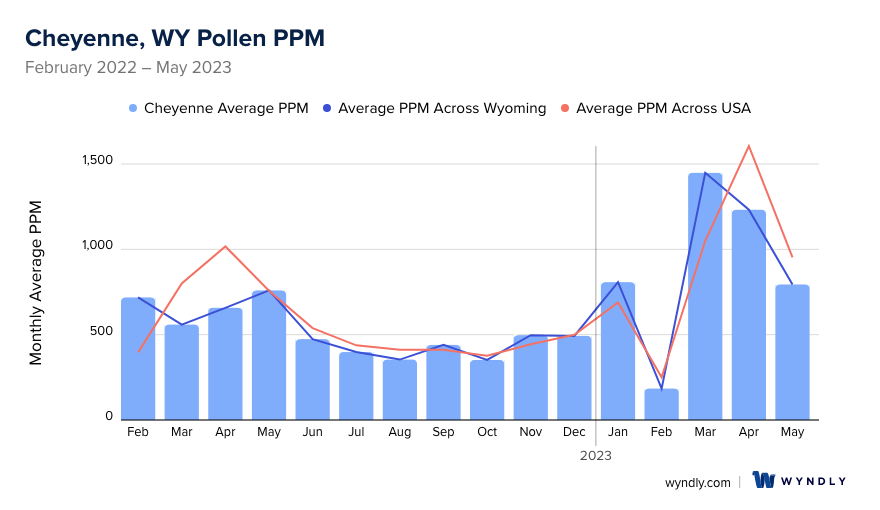

Cheyenne, WY Pollen and Allergy Breakdown by Month
Grass
When is grass pollen highest in Cheyenne, WY?
February has the highest grass pollen in Cheyenne, WY with an average PPM of
When is grass pollen lowest in Cheyenne, WY?
December has the lowest grass pollen in Cheyenne, WY with an average PPM of
Tree
When is tree pollen highest in Cheyenne, WY?
March has the highest tree pollen in Cheyenne, WY with an average PPM of
When is tree pollen lowest in Cheyenne, WY?
September has the lowest tree pollen in Cheyenne, WY with an average PPM of
Weed
When is weed pollen highest in Cheyenne, WY?
November has the highest weed pollen in Cheyenne, WY with an average PPM of
When is weed pollen lowest in Cheyenne, WY?
February has the lowest weed pollen in Cheyenne, WY with an average PPM of
Cheyenne, WY Pollen Monthly Breakdown by Pollen Type
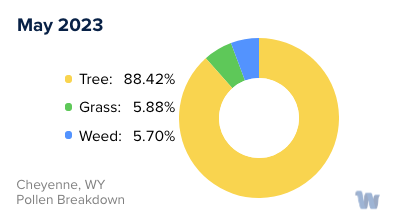
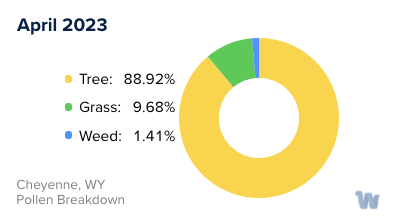

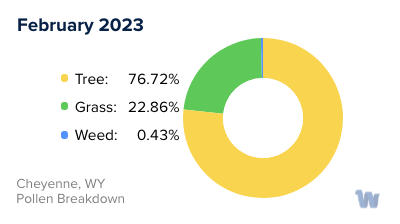

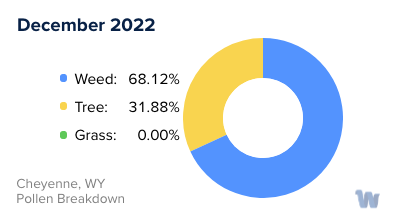
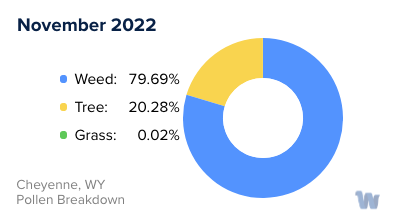
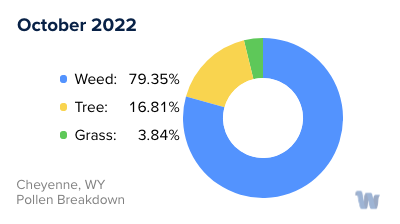
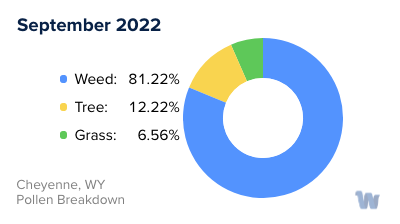



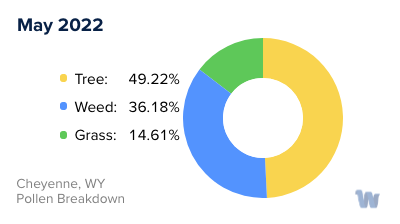
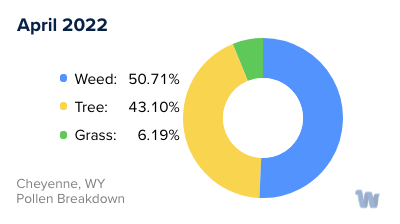
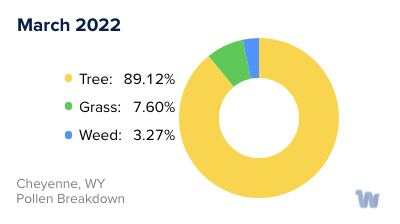
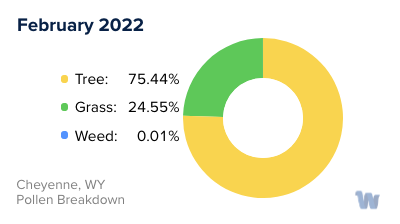
Pollen and Hay Fever in Cheyenne, WY
For residents of Cheyenne, Wyoming, allergies can be a persistent part of life throughout most of the year. The city, like the rest of the state, experiences a fairly typical allergy season. Starting from early March, allergy season extends until the first frost of winter, usually around late November. The types of pollen that cause allergies, however, vary throughout the year, with each season having its unique allergens.
As spring rolls around, trees are the main contributors to the pollen in the air. Notable offenders include willow, ash, boxelder, and maple trees. These trees start to release their pollen as early as February, marking the start of the allergy season. The tree pollen count can remain high into late spring and even the early summer months.
When summer arrives, the focus of allergies shifts from trees to grass. Starting around May and going into late July, grasses become the primary source of allergens. In Cheyenne, the grasses that commonly cause allergies include bluegrass and timothy grass.
As summer wanes and fall begins, weed pollen takes the stage. This period usually commences in late August and goes on until the first frost of winter. In Cheyenne, common weed allergens include ragweed, sagebrush, and wormwood.
Winter, with its cold temperatures, typically provides some respite from outdoor allergens in Wyoming, as most plants stop producing pollen. However, it's worth noting that indoor allergens, such as dust mites and pet dander, may still be a concern during the colder months.
In summary, living in Cheyenne means adjusting to a shifting array of allergens throughout the year. Understanding these seasonal changes can help individuals better anticipate and manage their allergies.


